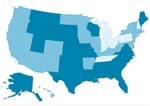Business
Work force shortage linked to rising hospital costs
■ Hospital group says tough questions about spending lay ahead.
Growth in spending on hospital care has been largely due to rising costs associated with a work force shortage, greater demand for services and an increase in the complexity of care provided, a new study concluded.
The study, conducted by The Lewin Group for the American Hospital Assn., said national health expenditures jumped from $1.2 trillion in 1998 to $1.7 trillion in 2003, with 52% of the increase in hospital care spending attributable to rising costs for goods and services.
Carmela Coyle, AHA's senior vice president of policy, said most costs for providing care were due to the increased wages hospitals must pay employees to remain competitive amid a national work force shortage in several positions such as nursing.
"Work force is the single biggest thing that hospitals purchase as part of their market basket," Coyle said.
And, as other increasing expenses like technology also contribute to the cost of providing care, hospitals may be forced to tighten their belts and pass on price increases to consumers.
"Care is getting more expensive, and yet consumers, corporations and health plans are looking to spend less. Those two are on a collision course," Coyle said.
To make matters worse, the AHA estimates that nearly one third of the nation's hospitals are already operating in the red. Another third barely break even.
The study suggests that the outlook will only get worse before it gets better, forcing policy-makers, health care professionals and consumers to ask tough questions, Coyle added. "It is going to mean very challenging times and a balancing act in determining what amount is right and what value is right for each dollar we spend on health care."
Those questions likely will come at a time when demand for care is growing. The study found that 43% of the surging costs were attributable to greater demand for care as the population ages and grows sicker. "That's quite dramatic especially after several years of declines in hospital use. We're actually now starting to see hospital admissions rise again," Coyle said.












